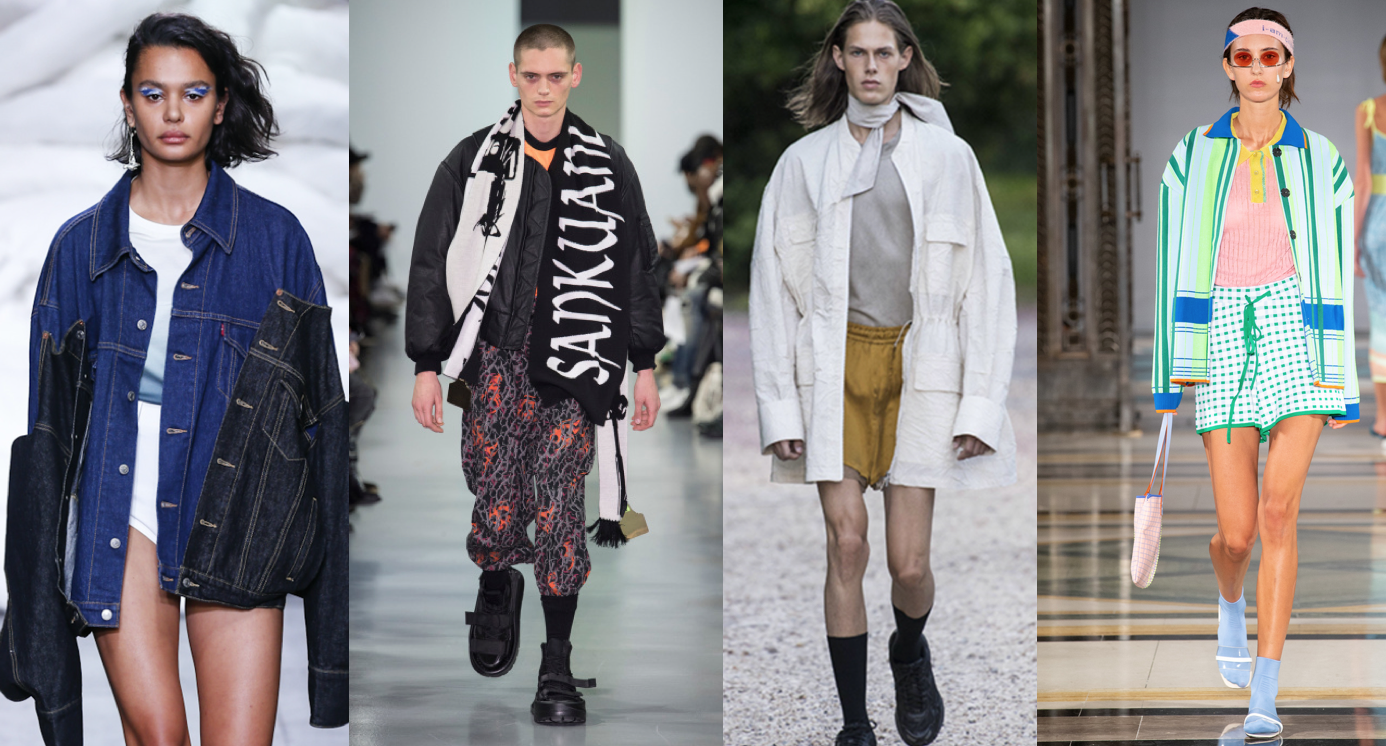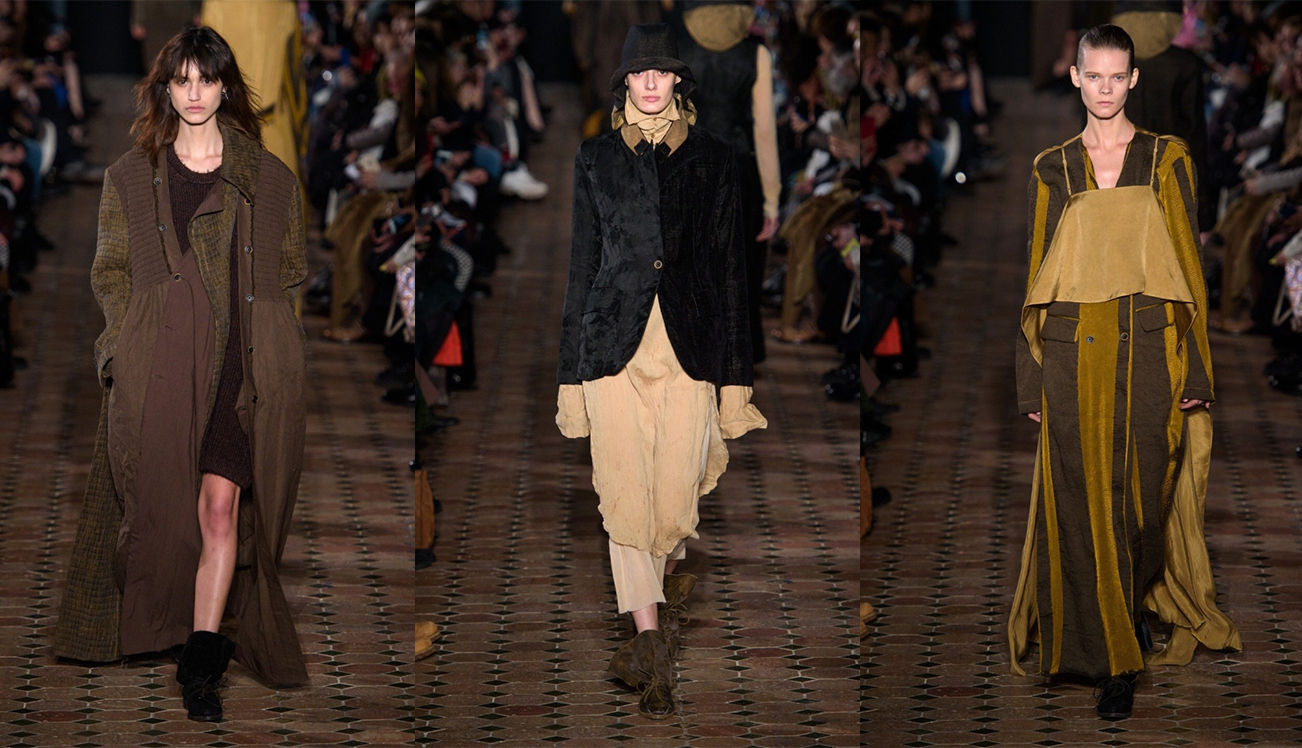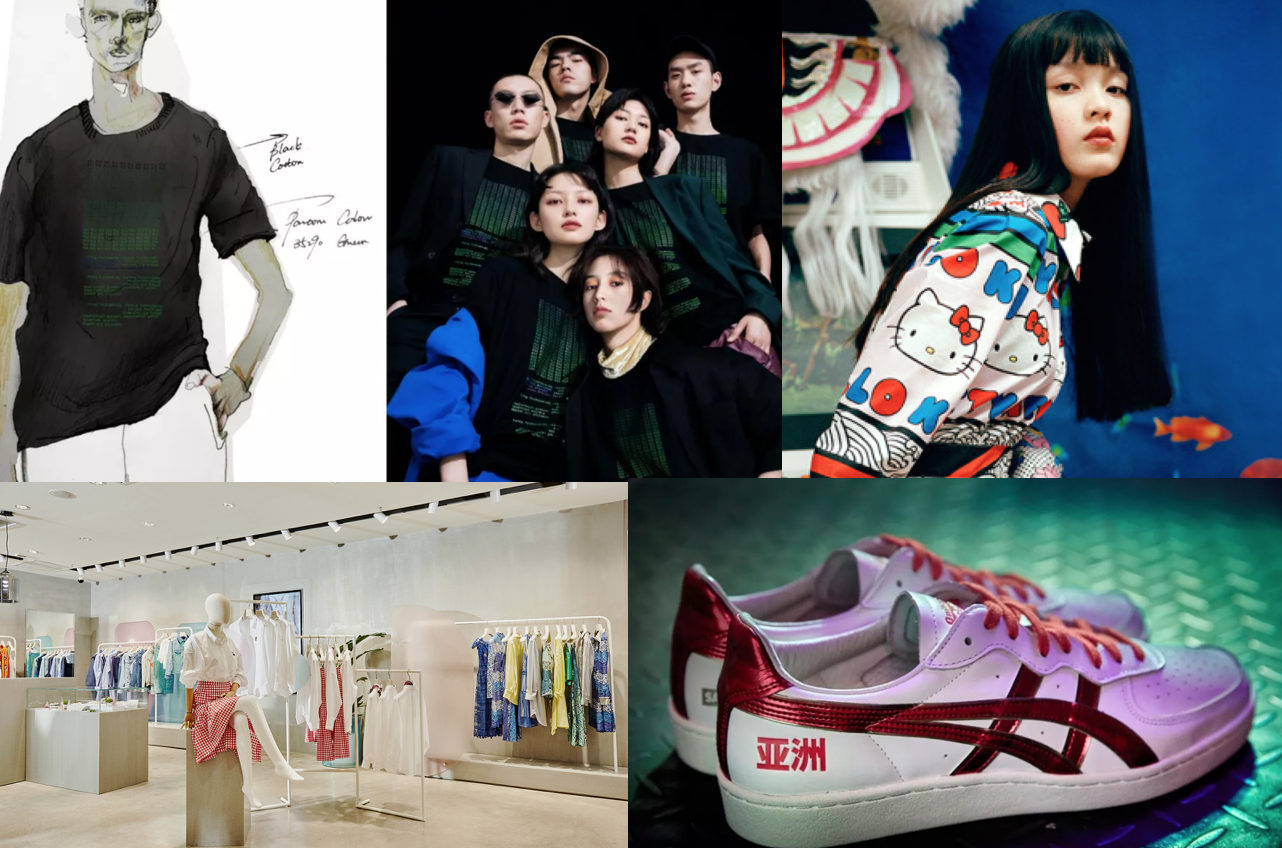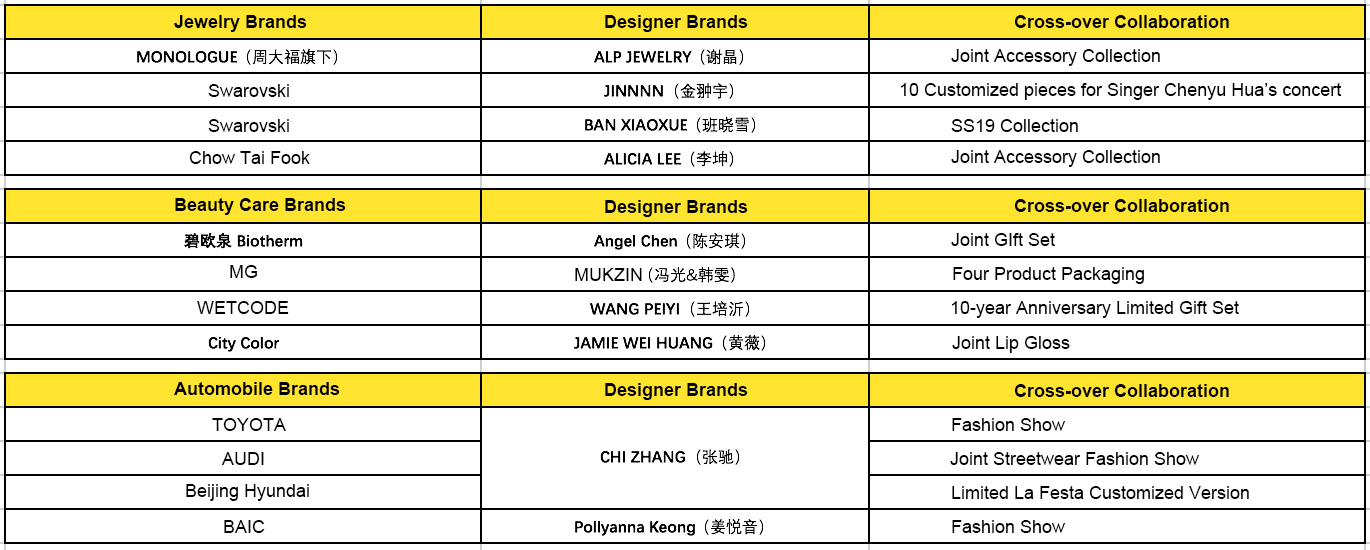Luxe.Co Exclusive Report | Top Five Trends in China Independent Designers and Brands
March 7,2019
Luxe.Co has established its database on China fashion designers since 2015, and has reported the latest business development and updates of China fashion designers and brands since 2016. In 2019, the commercial value of China independent designers and their brands has been increasingly recognized by the market. They have also actively presented their collections on the international stage. China fashion designers have become an important force, which cannot be underestimated in the China fashion industry.
According to тLuxe.Co China Designer Monthly Report" in 2018, Luxe.Co has concluded the top five trends in China designers and brands:
- More and more China designers have presented at the international stage and expanded overseas markets
- China e-commerce enterprises have become important supporters for independent designers
- Brands have continued focusing on online channels and expanding offline channel actively and rationally
- Brands have tried opening sub-lines to access to a broader range of consumers
- Designer brand cross-over collaboration has become increasingly popular

1. More and more China designers have presented at the international stage and expanded overseas markets
In FW2018, nearly 50 China designer brands had presented at four major international fashion weeks. Nearly 90 China fashion brands (including designer brands and established Chinese fashion enterprises and associations) had presented at four major international fashion weeks in FW2018, which was a record high.
Compared to 48 designer brands in 2017, about 72 China designer brands entered the official schedule of four major international fashion weeks in 2018 (please refer to Appendix). 48 China designer brands have presented in New York Fashion Week, while 14, 7 and 3 in London Fashion Week, Paris Fashion Week and Milan Fashion Week, respectively in 2018.
Although a glamorous fashion show does not guarantee its commercial success, four major international fashion weeks are global fashion stage. Brand teamsт execution capabilities are well-trained through fashion shows. Intensive media, buyers, opinion leaders and professionals gather together and provide designer brands high-profile PR opportunities and a shortcut to feedback from the international market.
In addition to fashions shows, some China designers chose to launch their new collections overseas to explore international customer base. For example, six China designer brands, including SUSAN FANG (Susan Fang) and UNDERAGE (Ying ShenцВшЙ), released their new collections during four major international fashion weeks.
China designers also presented their collections at fashion weeks in other countries and regions. For example, the designer brand FFIXED STUDIOS (Fiona Lau & Kain Picken) was invited to present at Kazakhstan Fashion Week. Designers Jinliang Lin (цшПфКЎ) and Jia Hao (щфНГ) presented their works at Turin Fashion Week in Italy.
Over the past year, more and more designers have won or shortlisted international awards. For example, i-am-chen (Chen ZhiцЏцЈ) won the Merit Award of Fashion Scout SS19 in the U.K. Designer Chen Zhi (i-am-chen) and Angel Chen (щхЎчЊ) became the semi-final winners of the Hong Kong division in the International Woolmark Prize 2018/19.
It is worth mentioning that young accessory designer Percy Lau has set up an eyewear design scholarship at the Jewelry Design Department of her previous school, Central Saint Martins College of Arts and Design in London. The purpose was to have more students understand and practice eyewear design, and to discover more young talents in eyewear design.

2. China e-commerce enterprises have become important supporters for independent designers
Many internet companies, including Alibaba, JD, VIP.com and Tencent have been actively involved in international fashion week events, and become major sponsors for designer fashion shows.
In February 2018, TMall launched "TMall China Day" at New York Fashion Week for the first time, and presented at the official schedule of New York Fashion Week Menswear. Designer Brand Chen Peng launched his collection at "TMall China Day". In September, the second season of тTMall China Dayт was launched at New York Fashion Week Womenswear. Designer brands Particle Fever and Angel Chen presented their collections through тTMall China Dayт.
At London Fashion Week SS2019, brands XU ZHI and Xiao Li's fashion shows were supported by JD. Brands Mukzin (хЏц), Bailuyu (чНщЙПшЏ), KISSCAT, A Life On The Left (чцДЛхЈхЗІ) were supported by VIP.com and presented as special opening at London Fashion Week.
Tencent also participated in New York Fashion Week SS2019. Tencent News and the China Fashion Association jointly launched тHOT NOWт and presented at the official schedule of New York Fashion Week. Designer brands Maryma, Alicia Lee, Luire, Khieng Atelier, Fishing (цИ) were sponsored and presented their collections.

3. Brands have continued focusing on online channels and expanding offline channel actively and rationally
As designer brands become increasingly mature, they have gained more bargaining power in the market and become smarter and more cautious. According тLuxe.Co China Designer Monthly Report" in 2018, China designer brands have opened nearly 40 new direct-managed stores, with a slight drop compared to 2017. It showed that, to some certain extent, designers tended to be more rational in offline expansion.
Among them, Bao Bao Wan Fine Jewelry (Baobao WanфИхЎхЎ), MICartsy (Zishan WangччДЋч), Mukzin (Guang Feng & Wen HanхЏх &щЉщЏ) opened their first offline stores. Taoray taoray (Tao WangчщЖ) opened its first flagship store at IFS in Changsha.
There are also some designer brands that accelerated in offline expansion and opened multiple direct-managed stores in one year. For example, COMME MOI (Yan Lvхч) opened 6 new stores, YE'SbyYESIR (Qian YeхЖшАІ) opened 4 new stores, BAN XIAOXUE (Xiaoxue BanчцщЊ) and HEFANG Jewelry (Hefang SunхфНцЙ) opened 2 new stores, respectively.
These new stores are all located in major commercial complex in first-tiered and second-tiered cities, which reflected that the retail business in China had paid more attention to China designer community. For example, Shenzhen Upper Hills Complex was opened in January 2018 and had five designer brand stores including vmajor (Weite ZhuцБхЈчЙ) and SYU SYU HAN (щЉчЛЃчЛЃ).
According to тLuxe.Co China Designer Monthly Report" in 2018, ten designer brands opened TMall online flagship stores, including COMME MOI and YIRANTIAN (щфИчЖхЄЉ). Boundless (цВЁшОЙ)(Da ZhangхМ шОО), Content (чЎхН)(Xiaoling LiaoхЛцчВ) opened Taobao online stores.
In addition, designer brands SHAOO (Wenwei TongчЋЅцхЈ), CALVIN LUO (Yucheng LuoчНчІЙх) opened Weidian online store. Brand Renli Su (Renli SuшфЛш) opened WeChat online store.

4. Brands have tried opening sub-lines to access to a broader range of consumers
It was a new choice for high-end positioned designers to launch young sub-lines or new brands with more accessible price ranges.
For example, designer Wanbing Huang (щЛхЉхА) launched a new brand AT-ONE-MENT. Compared to the previous brand Wanbing Huang, the new brand is more commercial. Designer brand Angus Chiang (Yixun JiangцБхЅх) launches its sports line CHIANGUS. MICartsy opened a sub-line, called MIC Player, which is only sold on the brandтs Taobao online store.
Designer brands aim to find a balance between creativity and business, and access to a broader range of consumers.
5. Designer brand cross-over collaboration has become increasingly popular
According to тLuxe.Co China Designer Monthly Report" in 2018, there are as many as 90 cases of designer brand cross-over collaboration, which was a record high compared to 2017 (nearly 80 cases). In August 2018 alone, there were 17 cases.
Among them, there were 33 cases of collaboration with commercial brands, 13 cases with internet and technology companies, 11 cases with art filed and IPs, 7 cases between designer brands, 11 cases with institutions, and 16 other collaboration, respectively.
More and more quality commercial brands have invited designer brands for collaboration. From simple packaging and graphic design collaboration at the early stage, to todayтs joint product launch, the collaboration has enhanced gradually.
Among all types of commercial brands, sports and leisure brands have been most active in collaboration with designer brands. Levi's, New Balance, Onitsuka Tiger (щЌМхЁш), Converse, NIKE, PUMA, Li-Ning have all been actively trying to collaborate with designers.
On fashion shows, Luxe.Co has also noticed more and more cross-over collaboration between designer brands and non-fashion companies and IPs, such as JD, VIP.com, ele.me (щЅПфКфЙ), Street Voice, OPPO, VIVO, HTC Vive, Visa and 3M.
Movies and animation IPs have had many collaboration with fashion designers in 2018. For example, the movie "Hidden Man" and RFACTORY (Yingnan WuхДшБчЗ), , "Long Dayтs Journey into Night" and BABYGHOST (Qiaoran HuangщЛцчЖ & JOSH) have launched joint collections, respectively. Designer Uma Wang also participated in the costume styling and main actress (Yun Zhou) styling of the movie тHidden Manт. Animation IPs including Disney, DC Comics, Hello Kitty have also collaborated with designer brands.
Luxe.Co will provide a separate in-depth analysis focusing on the cross-over collaboration in China designer brands.
Appendix
72 China designer brands have presented at the official schedule of four major international fashion weeks in 2018

32 Cross-over collaboration cases between China designer brands and commercial brands (fashion, jewelry, beauty care and automobile)


яНPhotos: Brands
яНChinese Reporter: Ruoyu Zhu
Marketing and Business Cooperation, please email to contact@hualizhi.com












Comments